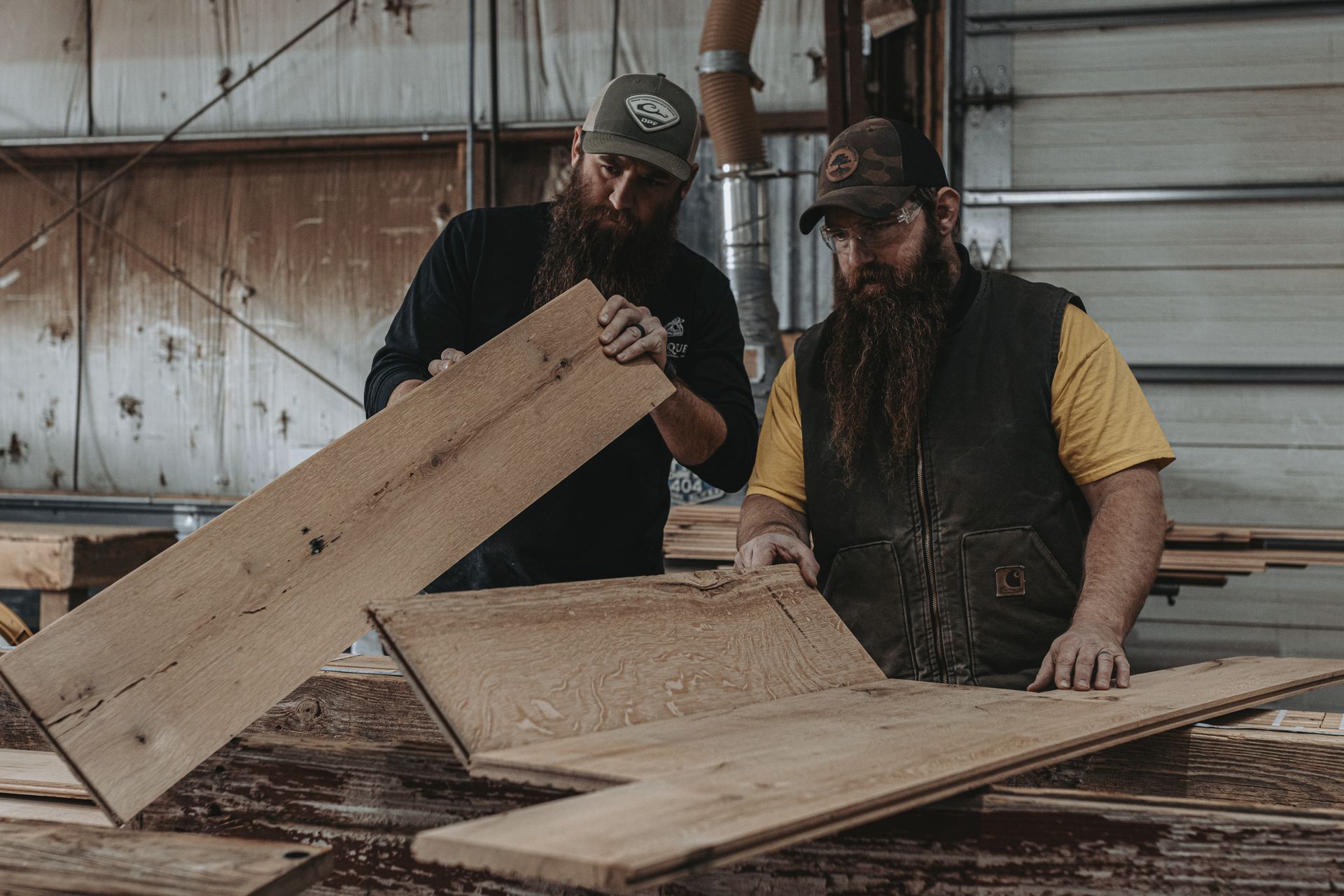Hardwood vs. Softwood: Key Differences to Know
Compare hardwood and softwood types for your next project

If you’ve stood in a lumber yard wondering whether to choose hardwood or softwood, you’re not alone. The difference isn’t just about how hard or soft the wood feels. It’s about the trees, the way they grow, and how the wood behaves in a project.
Picking the right type of wood can save you time, money, and frustration. Here's a straightforward guide to help you decide.
Hardwood vs. Softwood: The Key Difference
The real difference between hardwood and softwood isn’t their toughness. It all comes down to the type of tree they come from. This difference affects nearly everything about the wood, like how it looks, how easy it is to work with, and what it’s best for.
What Is Hardwood?
Hardwoods come from trees that lose their leaves each fall, such as oak, maple, and walnut. These trees are slower to grow, which gives hardwoods their dense structure. That density makes them strong and durable, perfect for high-quality furniture, flooring, and fine craftsmanship.
What Is Softwood?
Softwoods come from evergreen trees like pine, cedar, and fir. These trees grow faster, making softwood more affordable and widely available. Softwoods are lighter and easier to cut, so they’re great for construction, DIY projects, and items that will be painted.
How They Grow Makes a Difference
Hardwood trees grow slowly, creating denser wood that’s often heavier. This density gives the wood durability, but can make it harder to work with. Softwoods, on the other hand, grow quickly, especially in warmer climates, producing wood that’s lighter and easier to handle.
However, there are exceptions. Certain softwoods, like yew, are extremely hard, and some hardwoods, like balsa, are unusually soft.
What to Look for in the Wood
Density and Durability
Hardwoods tend to be heavier and more durable, which makes them ideal for flooring, furniture, or anything subject to daily wear. They hold nails and screws securely and resist scratches. Softwoods are less dense, making them easier to cut and great for projects where weight matters.
Grain Patterns
Hardwoods usually have richer, more detailed grain patterns because they contain pores. This can make them stand out when stained or finished. Softwoods, with their simpler structure, often absorb finishes more evenly. However, they can sometimes look blotchy without proper prep work.
Color and Appearance
Hardwoods like walnut and cherry often feature distinct heartwood and sapwood colors, adding natural variation. Softwoods tend to have a uniform appearance, but vibrant species like cedar and redwood can still offer beautiful tones.
Working with Hardwood vs. Softwood
Why Choose Hardwood?
Hardwoods are denser, which means they require sharper tools and more effort. This also makes them great for detailed, precise projects. Use hardwoods for tasks like:
- Building furniture
- Crafting stylish cabinets or trim
- Installing scratch-resistant flooring
Why Choose Softwood?
Softwoods are easier to work with, especially for beginners, since they cut smoothly with hand tools. They’re great for projects that need speed and affordability, like:
- Building a deck
- Framing a house
- Painting wooden signs or shelves
Keep in mind that some softwoods, like pine, can release sticky resin during cutting, which might require extra cleanup.
When Should You Use Each Type?
Hardwood Is Best For:
- Furniture that lasts for years
- Durable flooring for heavy use
- Detailed trim or millwork
- Kitchen tools like cutting boards
Softwood Is Best For:
- Framing and construction
- Outdoor fencing or decking
- Simple DIY projects
- Painted woodwork
Cost Differences
Hardwoods usually cost more due to their slow growth and durability. Still, common species like oak or maple can be surprisingly affordable. Softwoods, being faster to grow, are often less expensive, though premium types like cedar can be pricier.
A Look Back at Historic Timber
At Bay & Bent, we specialize in salvaging historic hardwood from barns and other old buildings. One thing we’ve learned is how much quality matters. Those beams, cut from slow-growing trees centuries ago, are incredibly strong and stable. They’ve held up over time because they were chosen for specific purposes, reflecting the craftsmanship of the builders.
Environmental Considerations
Both hardwoods and softwoods can be sustainable, as long as they’re sourced responsibly. Softwoods grow faster, making them more renewable, while well-managed hardwood forests balance slower growth with sustainability. Reclaimed wood, whether hardwood or softwood, is another fantastic option for its environmental and aesthetic benefits.
Making Your Choice
Choosing between hardwood and softwood depends on your project needs. To make it simple:
- Pick hardwood if you need something strong, stylish, or long-lasting.
- Pick softwood if you want something lightweight, easy to work with, or cost-effective.
No matter what you choose, understanding these differences will help you get the most out of your wood. By matching the wood’s natural traits to your project, you’ll be setting yourself up for success. Whether you're tackling fine furniture or an outdoor deck, the right wood can make all the difference.









